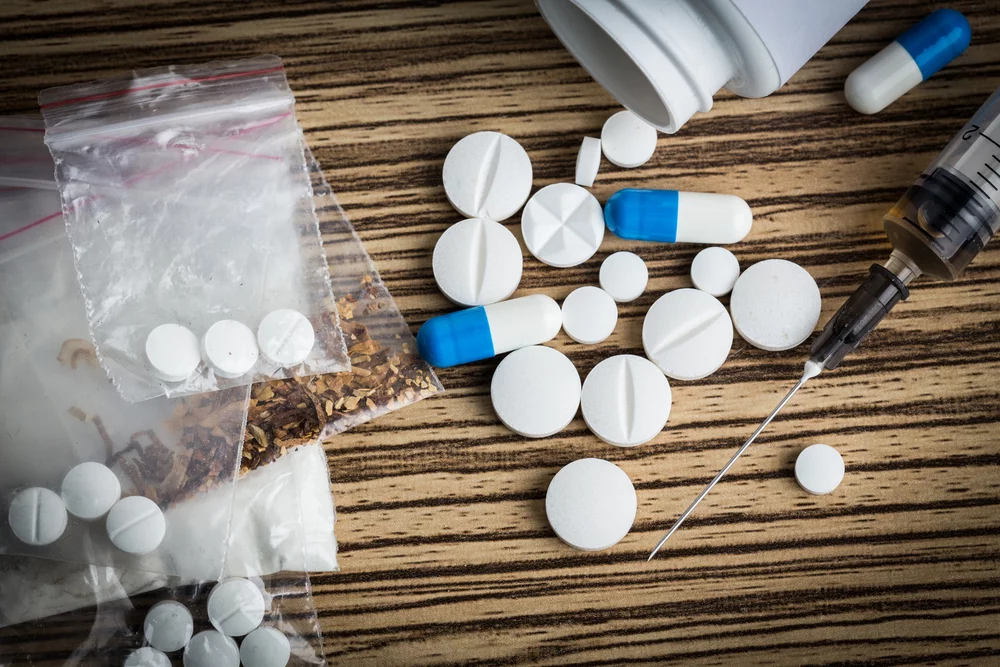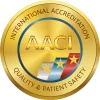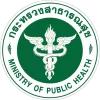For years, opioids have been at the forefront of treating pain. However, the effectiveness of opioids over a long period is being debated, particularly given the high risk for addiction. Knowing how opioids work, their risks, and what the alternatives are, is critical for deciding the best course of treatment for pain.
It was 1997, and Matthew Perry was an internationally-recognised television star on the popular US sitcom Friends. After suffering an injury in a jet ski accident, he was prescribed the opioid Vicodin to manage the pain. Perry told People Magazine, “It wasn’t my intention to have a problem with it, but from the start I liked how it made me feel, and I wanted to get more of it.”
This incident began a decades-long battle with opioid addiction for Perry, and spotlighted an epidemic that has affected the lives of millions around the world. In the US alone, it is estimated that 25 million people struggle with chronic pain, but lack effective non-opioid alternatives for pain management. A 2020 study found that anywhere from 21-29% of people who are prescribed opioids will misuse them, and between 8-12% will develop an addiction. With opioid-related overdoses on the rise, those struggling with chronic pain need a clear understanding of the risks – and alternatives – to opioid use.
What are Opioids and What is Typical Opioid Usage?
Opioids are a powerful type of drug typically prescribed for people who are experiencing acute pain, such as from an injury, cancer or surgery. Some types of opioids are derived from the opium plant, while others are synthetically produced. There are many different types of opioids, and commonly prescribed forms include:
- Fentanyl
- Codeine
- Oxycodone (OxyContin, Percocet)
- Hydromorphone
- Oxymorphone (Opana)
- Tapentadol
- Methadone
- Hydrocodone (Vicodin)
- Morphine (Kadian, Avinza)
- Tramadol
Illegal drugs such as heroin and opium are also considered opioid drugs, and so heroin addiction is also a type of opioid addiction.
What do opioids do?
Opioids work by triggering a massive release of endorphins in the brain to help reduce pain. Endorphins are a feel-good neurotransmitter that positively influence the physiological response to pain and promote a sense of calm and wellbeing. Endorphins are also connected to the brain’s reward center, and are released naturally when we experience pain as a way for the body to try and manage discomfort. They’re also released during pleasurable activities, like exercise, sex, dancing, eating good food, or massage.
What do opioids feel like?
The difference between a natural release of endorphins and an opioid-stimulated release of endorphins is that opioids cause abnormally high amounts of endorphins to flood the brain. This not only helps to significantly reduce or eliminate moderate to severe pain, but also can induce a state of euphoria.
Why are opioids addictive?
With the onset of the opioid epidemic, many people are asking questions like, “what is opioid addiction?”, “why are opioids so addictive?” and “why are painkillers addictive?” Addiction science has found that any substance which influences the brain’s reward center also has the potential to cause addiction. The ability of opioids to flood the brain with a massive rush of endorphins is what causes users to feel a deep sense of relaxation and contentment, as well as pain relief, and it is this stimulated action that can lead to addiction.
Some might be wondering if certain opioids are safer than others, asking questions like, “Is oxycodone addictive?” or “how is oxycontin addictive?” All opioids interact with brain chemistry in the same, powerful way, and therefore all create risks for opioid addiction and dependence.
What is Opioid Addiction?
Opioid addiction occurs when opioid users are compelled to take opioids, usually in progressively larger amounts, in spite of negative consequences to physical and mental wellbeing. Physical dependence also occurs with opioids, where users will experience negative and sometimes dangerous physical effects if they suddenly stop taking opioids.
Signs of Opioid Addiction
For those using opioids to manage pain, or for loved ones living with someone who is, there are a few key signs that can indicate that opioid misuse is occurring, thereby increasing the risk for addiction. These can include things like:
- Taking more than the prescribed amount (either greater amounts, or at a greater frequency)
- Seeking out more of the drug beyond its original prescription, like trying to buy the drug on the internet, getting prescriptions from other doctors, using other people’s prescriptions, or trying to get early refills
The general behavioural signs of an opioid addiction are often similar to those of other addictions, and can include things like:
- Loss of interest in previously enjoyed activities
- Significant changes in mood
- Lack of proper hygiene, such as showering or changing clothes regularly
- Sleeping at unusual hours
- Increasing isolation from family and friends
- Changes in appetite and weight
- Financial troubles
These changes in behaviour may indicate that the use of prescribed opioids has crossed the line into misuse, and highlight a need for treatment in order to avoid negative impacts.
Symptoms of Opioid Addiction
In addition to behavioural signs of opioid addiction, there can be physical indicators that someone is under the influence of opioids. These can include symptoms like:
- Drowsiness
- Mental fog
- Confusion
- Nausea or constipation
Symptoms that someone may have overdosed on opioids are more pronounced, and include:
- Vomiting
- Persistent falling asleep or loss of consciousness
- Slow, shallow breathing
- Faint heartbeat
- Purplish lips or fingernails
- Pale, blue, or cool skin
- Limp body
If you suspect someone you love may have overdosed on opioids, it is essential to seek medical help immediately.
Opioid Addiction and Chronic Pain: How are They Linked?
People suffering from chronic pain and opioid addiction tend to have a more difficult time quitting opioids than those who are pain-free. A recent study found that this could be linked to a mechanism called central sensitization. Central sensitization describes an abnormal processing of pain in the brain and spinal cord that results in people feeling more intense pain for a longer period of time.
A senior author of the study, Dr. Daniel J. Clauw, director of the Chronic Pain and Fatigue Research Center at the University of Michigan, reported that “patients higher in central sensitization were more likely to report pain as a major reason for why their opioid addiction first began, as well as for putting off addiction treatment, continuing and increasing their use of opioids, and fear of pain causing OUD [opioid use disorder] relapse in the future.” Understanding how opioids and chronic pain interact are an important step in considering whether opioids are the right course of treatment for those struggling with chronic pain.
Other risk factors for opioid use disorder
While studies are revealing a link between chronic pain and heightened potential for developing an addiction to opioids, there are other risk factors that anyone considering taking opioids should be aware of. These include things like:
- Family or personal history of substance abuse or narcotic addiction
- History of depression, anxiety or other mental health disorders
- Tendency towards risk-taking behaviours
- High stress
- Heavy use of other substances, such as tobacco
It is important to talk frankly with a medical professional about your medical history and lifestyle to see if you may have underlying risk factors for opioid addiction.
Considering Your Options: Alternatives to Opioids
The severity of the opioid epidemic has made many rethink the effectiveness of opioids as a treatment for chronic pain. In fact, studies suggest that opioids are safest when used for a short period, as the potential for addiction increases the longer people take them.
Alternatives for pain management are being further explored as long-term solutions to chronic pain that don’t carry the same risks of addiction. Depending on the type of pain people are experiencing, a doctor may recommend other forms of treatment, such as:
- Massage or acupuncture
- Physical therapy
- Exercise and/or weight management
- Other forms of non-addictive pain medications such as acetaminophen or ibuprofen
- Cognitive behavioural therapy (CBT)
- Treatment for mental health disorders, such as depression or anxiety, which can exacerbate chronic pain
These treatments address contributing factors to chronic pain, promoting a more holistic approach to pain management that connects the mind and body.
Struggling with Opioid Use Disorder? Consider an Opioid Treatment Center
If you or a loved one is facing an opioid use disorder, professional treatment is urgently necessary to safely detox from opioids and prevent long-term ill-effects from opioid misuse. Considering an inpatient programme at an opioid treatment center is a good option in receiving round-the-clock care in a safe environment free from triggers.
Under the care of a medical professional, withdrawal from opioids will be closely monitored, and support will be given to ease the discomfort of any resulting symptoms, which may include things like:
- Nausea, diarrhea and vomiting
- Muscle pain and cramping
- Insomnia
- Elevated heart, blood pressure and respiration rates
- Runny nose
- Feeling weak
- Chills
- Sweating
Once you’ve gone through detox, you’ll begin the process of rebuilding your life free from addiction. To do this, you’ll work with addiction specialists who are trained specifically in helping you regain your health and establish new patterns and ways of thinking in order to break free of the cycle of dependency.
Overcoming Opioid Addiction at The Dawn

The Dawn Wellness Centre and Rehab in Thailand caters to an international clientele and fosters an environment of healing and growth for those looking to recover from substance use or mental health disorders. At The Dawn, we offer a Signature Addiction Programme for individuals struggling with opioid addiction that includes treatment through all phases of recovery, from detox to aftercare support.
Our primary objective is for clients to achieve and maintain long-term recovery by understanding the root causes of their disorder, and equipping each individual with a personalised set of coping tools to use when dealing with life’s challenges. We work closely with each client to develop a customised, holistic treatment plan based on their specific needs and goals.
Located in beautiful northern Thailand, The Dawn is internationally accredited by the American Accreditation Commission International (AACI) and nationally licensed by the Thai Ministry of Health. At our resort-like facilities, you’ll have access to 24-hour medical care from our compassionate team of medical and mental health professionals. We offer a broad range of treatment modalities, from a variety of effective psychotherapies to a wide selection of wellness practices and holistic health treatments, all under one roof in a safe, relaxing environment.
Call The Dawn today to learn more about how we can help you overcome opioid use disorder and live a healthier, happier life.
Related Posts
 What You Need to Know About Opioid Withdrawal Symptoms, Detox and Treatment
Opioid addiction is becoming a global problem and is currently the primary cause of drug overdose in the U.S. Opioids such as morphine and codeine are synthetic drugs that cause the...
What You Need to Know About Opioid Withdrawal Symptoms, Detox and Treatment
Opioid addiction is becoming a global problem and is currently the primary cause of drug overdose in the U.S. Opioids such as morphine and codeine are synthetic drugs that cause the...
 Painkiller: Netflix Takes on the Story Behind the Opioid Epidemic
When Oxycontin burst on the scene as the newest innovation in pain management, many doctors were led to believe that this was a safer, effective alternative to other opioids. Netflix’s...
Painkiller: Netflix Takes on the Story Behind the Opioid Epidemic
When Oxycontin burst on the scene as the newest innovation in pain management, many doctors were led to believe that this was a safer, effective alternative to other opioids. Netflix’s...
 The US Opioid Epidemic: Killing More Americans Than Vietnam
The US opioid epidemic is causing drug overdose deaths to skyrocket – to an unprecedented 64,070 in 2016. That’s more Americans killed than by the Vietnam War. In the same...
The US Opioid Epidemic: Killing More Americans Than Vietnam
The US opioid epidemic is causing drug overdose deaths to skyrocket – to an unprecedented 64,070 in 2016. That’s more Americans killed than by the Vietnam War. In the same...
 Why Drugs Are Addictive : What Turns a Regular Person into an Addict?
The drugs that harm your body, your relationships and your community have the highest possibility of addiction and abuse. Why are some drugs so irresistible that even people who use...
Why Drugs Are Addictive : What Turns a Regular Person into an Addict?
The drugs that harm your body, your relationships and your community have the highest possibility of addiction and abuse. Why are some drugs so irresistible that even people who use...





